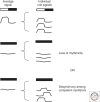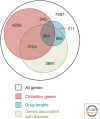Introduction to Chronobiology
- PMID: 29038118
- PMCID: PMC6120700
- DOI: 10.1101/cshperspect.a033613
Introduction to Chronobiology
Abstract
A diverse range of species, from cyanobacteria to humans, evolved endogenous biological clocks that allow for the anticipation of daily variations in light and temperature. The ability to anticipate regular environmental rhythms promotes optimal performance and survival. Herein we present a brief historical timeline of how circadian concepts and terminology have emerged since the early observation of daily leaf movement in plants made by an astronomer in the 1700s.
Copyright © 2018 Cold Spring Harbor Laboratory Press; all rights reserved.
Figures





References
-
- Aschoff J, Wever R. 1962. Spontanperiodik des menschen bei ausschluss aller zeitgeber. Naturwissenschaften 49: 337–342.
-
- Beckwith EJ, Ceriani MF. 2015. Experimental assessment of the network properties of the Drosophila circadian clock. J Comp Neurol 523: 982–996. - PubMed
-
- Beling I. 1929. Über das zeitgedächtnis der bienen. Zeitschrift für Vergleichende Physiologie 9: 259–338.
Publication types
MeSH terms
Grants and funding
LinkOut - more resources
Full Text Sources
Other Literature Sources
Medical
